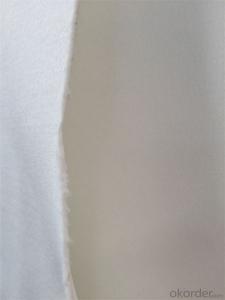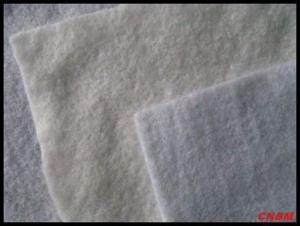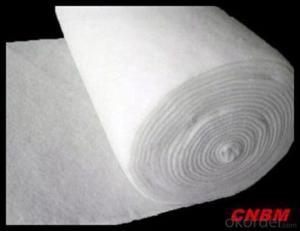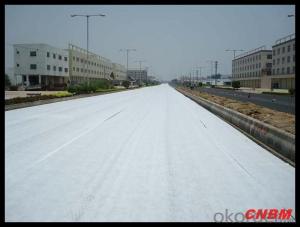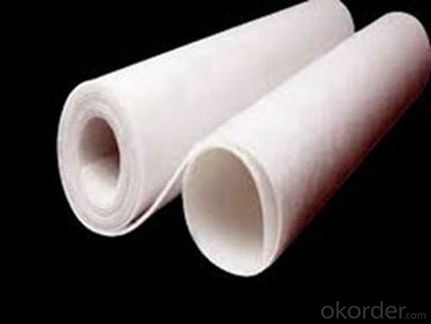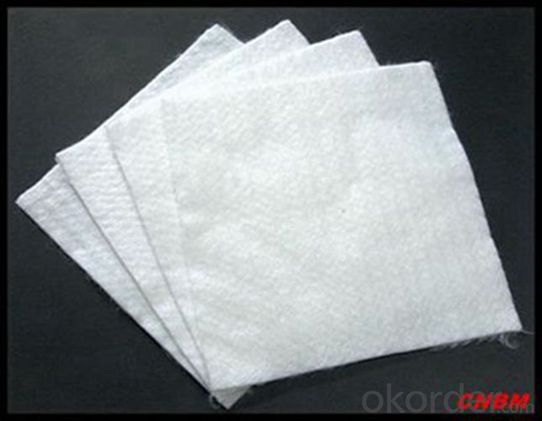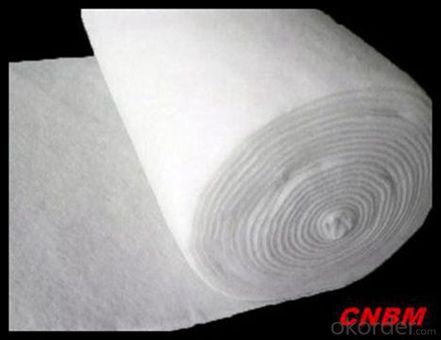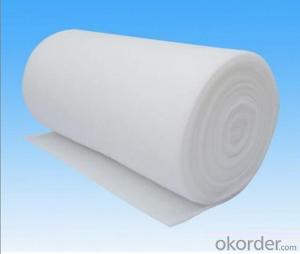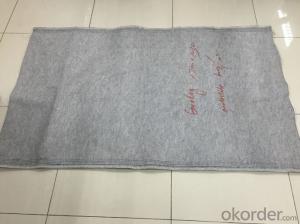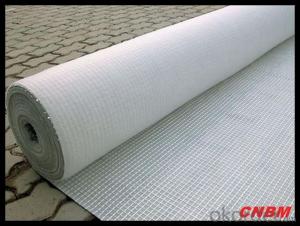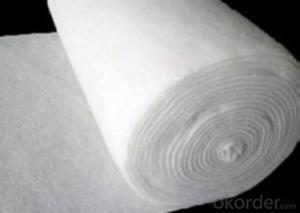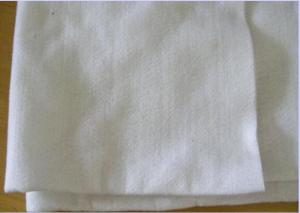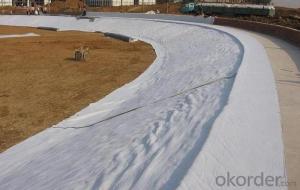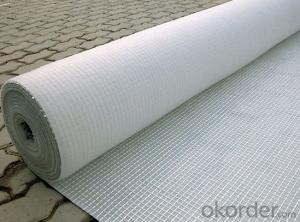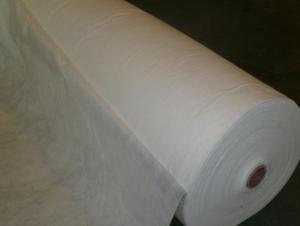Geotextil Pavaj - Non Woven Geotextile for Reinforcement and Drainage Cmax
- Loading Port:
- China main port
- Payment Terms:
- TT OR LC
- Min Order Qty:
- 2000 g/m²
- Supply Capability:
- 1000000 g/m²/month
OKorder Service Pledge
OKorder Financial Service
You Might Also Like
Specification
Description:
Nonwoven Geotextile 600G/M2 Geotextile Pp Non-Woven Geotextile Bags Made In China is a special kind of nonwoven geotextile because of its special manufacture method by puncturing the rolling formed layer made of randomly oriented short staple fiber. Our raw material is the top class 100% new PP(Polyproplylene) or PET(Polyester) fiber. The needle punch process involves forcibly entangling layers of loose staple fibre into three dimensional structure by sequentially punching and pulling out barbed needles through the fiber matrix, and forms a strong fabric that retains its dimensional stability, expands the serving year to all the applied project. Because of its proven track record and versatility, Needle Punched, as the most commonly used Nonwoven Geotextile, is widely used in civil and environmental engineering applications like subsurface drainage, roadway separation, railroad stabilization, erosion control, hard armor underlayment, landfill leachate collection, underground retention/detention systems, environmental protection and other projects.
Features
1)Geotextile can make the water flow easily, and form a drainage channel in the soil, and then make the liquid and gas out of the soil.
Make use of its pulling resistance and deformation resistance that can strength the soil to reinforce the stability of the construction structure and improve the soil’s quality.
2) Make the focus proliferate, deliver and decompose efficiently and prevent the soil from destruction from outside factor.
3) Prevent the top and bottom layer’s gravel, soil and concrete from mixer.
4) The mesh cannot be plugged easily – for the strain and moving quality of the network that formed by the antitype fiber.
5) High soaking quality—at the pressure of soil, it also can keep good soaking quality.
6) Corrosion resistant – using the polypropylene and polyester as raw material, it can resist the sour and aid, erosion, boring and oxidation.
7) The construction is easy; the weight is light, convenient for using, and it making construction easy.

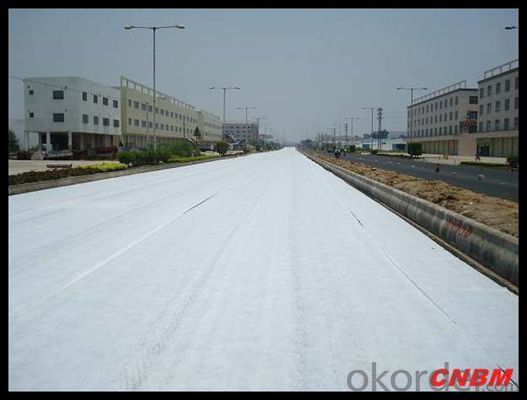
Main Export Markets:
Asia
Australasia
Central/South America
Eastern Europe
Mid East/Africa
North America
Western Europe
After-sales service
1.In order to provide customers with comprehensive technical support,we will provide technical and other related information upon request in a timely manner.
2.In required,we will appoint specialized technicians to the construction site to give technical trainings to construction people,and offer technical guidance throughout the whole construction process.
3.For damage due to shipment and delivery,after we receive the complaint,we will check the issure through provided pictures and videos.If our responsibility is confirmed,we wil offer free replacement.
4.When the construction is completed,as your request,our technical staff may participate in the final acceptance.
FAQ:
Q: What kind of payments does jenor support?
A: T/T, L/C, Cash are accepted.
Q: Do you charge for the samples?
A: Accordeing to our company policy, the samples are free, we only charge the freight fee. And we will return the freight fee during the next order.
Q: Can you produce according to customers' design?
A: Sure, we are professional manufacturer, OEM and ODM are both welcome.
Q: Do you have other products?
A: Yes, please check the pictures:
- Q: Can geotextiles be used for erosion control in agricultural fields?
- Yes, geotextiles can be used for erosion control in agricultural fields. They are commonly employed to stabilize soil, prevent the loss of sediment, and promote water infiltration. Geotextiles help reduce erosion caused by wind, water, or other environmental factors, thereby protecting the agricultural land and improving its productivity.
- Q: Application of composite geotextile
- Water conservancy projects: seawall, river embankment, lake embankment project; reservoir reinforcement project; reclamation project; flood control and rescue. Highway and railway engineering: soft foundation reinforcement treatment; slope protection; road anti-reflective crack structure layer; drainage system; green isolation zone. Electrical engineering: nuclear power plant basic engineering; thermal ash dam project; hydropower project.
- Q: Is there a geotextile in the center of the expressway
- Yes, there is
- Q: How do geotextiles help in preventing soil liquefaction?
- Geotextiles help in preventing soil liquefaction by providing stability and reinforcement to the soil. They act as a barrier and restrict the movement of soil particles, thereby reducing the potential for liquefaction. Additionally, geotextiles enhance the drainage capacity of the soil, allowing water to flow through and preventing the buildup of excess pore pressure, which is a major factor leading to liquefaction.
- Q: What is the lifespan of geotextiles?
- The lifespan of geotextiles can vary depending on several factors such as the quality of the material, environmental conditions, and the intended application. Generally, geotextiles are designed to have a lifespan ranging from a few years to several decades.
- Q: What are the specifications for geotextiles in stormwater management projects?
- The specifications for geotextiles in stormwater management projects vary depending on the specific requirements of the project. However, some common specifications include the type and thickness of the geotextile, its permeability, tensile strength, and durability. Additionally, the specifications may also outline the installation methods and quality control measures to be followed during the project.
- Q: What are the different manufacturing methods for geotextiles?
- There are several manufacturing methods for geotextiles, including needle punching, heat bonding, weaving, and knitting.
- Q: Geotextile use
- Geotextile is a new type of building materials, raw materials are polyester, acrylic, nylon and other polymer polymer synthetic fiber. In accordance with the manufacturing method is divided into: there are two types of geotextile and non-woven geotextile. Geotextile with anti-seepage, anti-filtration, drainage, isolation, reinforcement, protection, sealing and other functions, it with the conventional masonry and concrete material seepage effect compared to a low investment, simple construction process, short duration Infiltration effect is good, the channel effective use of high coefficient. Water conservancy engineering dams and slope protection filter, channel isolation, seepage control; road, railway, airport runway foundation isolation, filter, drainage, slope, retaining wall and road reinforcement, drainage; , Geotextile has been widely used in the field of infrastructure construction, and has been gradually applied in the field of infrastructure construction, and the use of geotextile In a wider area.
- Q: Can geotextiles be used in the protection of groundwater sources?
- Yes, geotextiles can be used in the protection of groundwater sources. Geotextiles are permeable fabrics that can effectively filter and separate soil particles, preventing them from contaminating groundwater sources. They can be used in various applications such as erosion control, drainage systems, and landfill liners to ensure the protection and preservation of groundwater quality.
- Q: How long do geotextiles typically last?
- Geotextiles typically have a lifespan of 20 to 25 years, depending on factors such as the type of material used, the level of exposure to environmental conditions, and the intensity of usage.
Send your message to us
Geotextil Pavaj - Non Woven Geotextile for Reinforcement and Drainage Cmax
- Loading Port:
- China main port
- Payment Terms:
- TT OR LC
- Min Order Qty:
- 2000 g/m²
- Supply Capability:
- 1000000 g/m²/month
OKorder Service Pledge
OKorder Financial Service
Similar products
Hot products
Hot Searches
Related keywords
